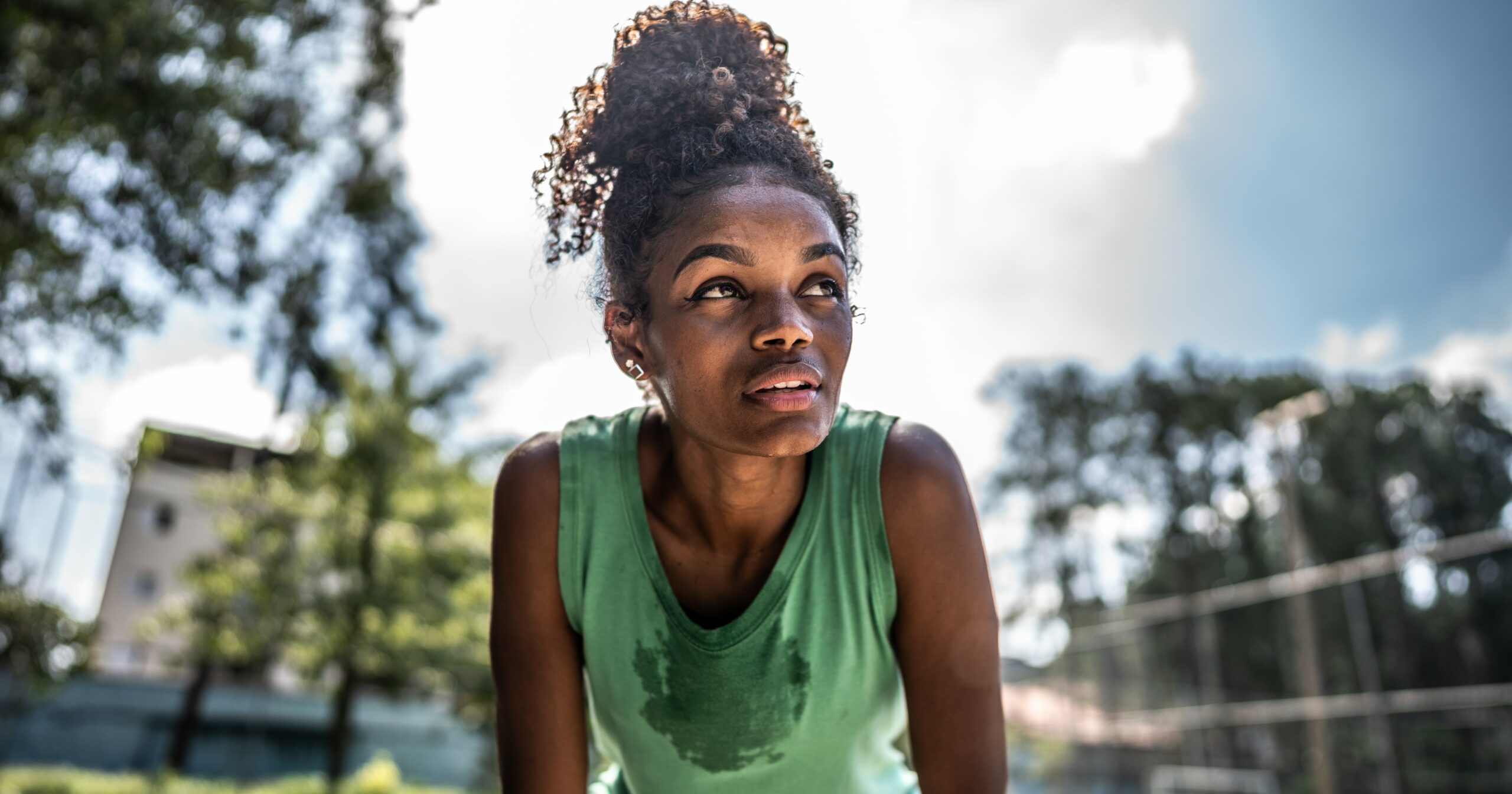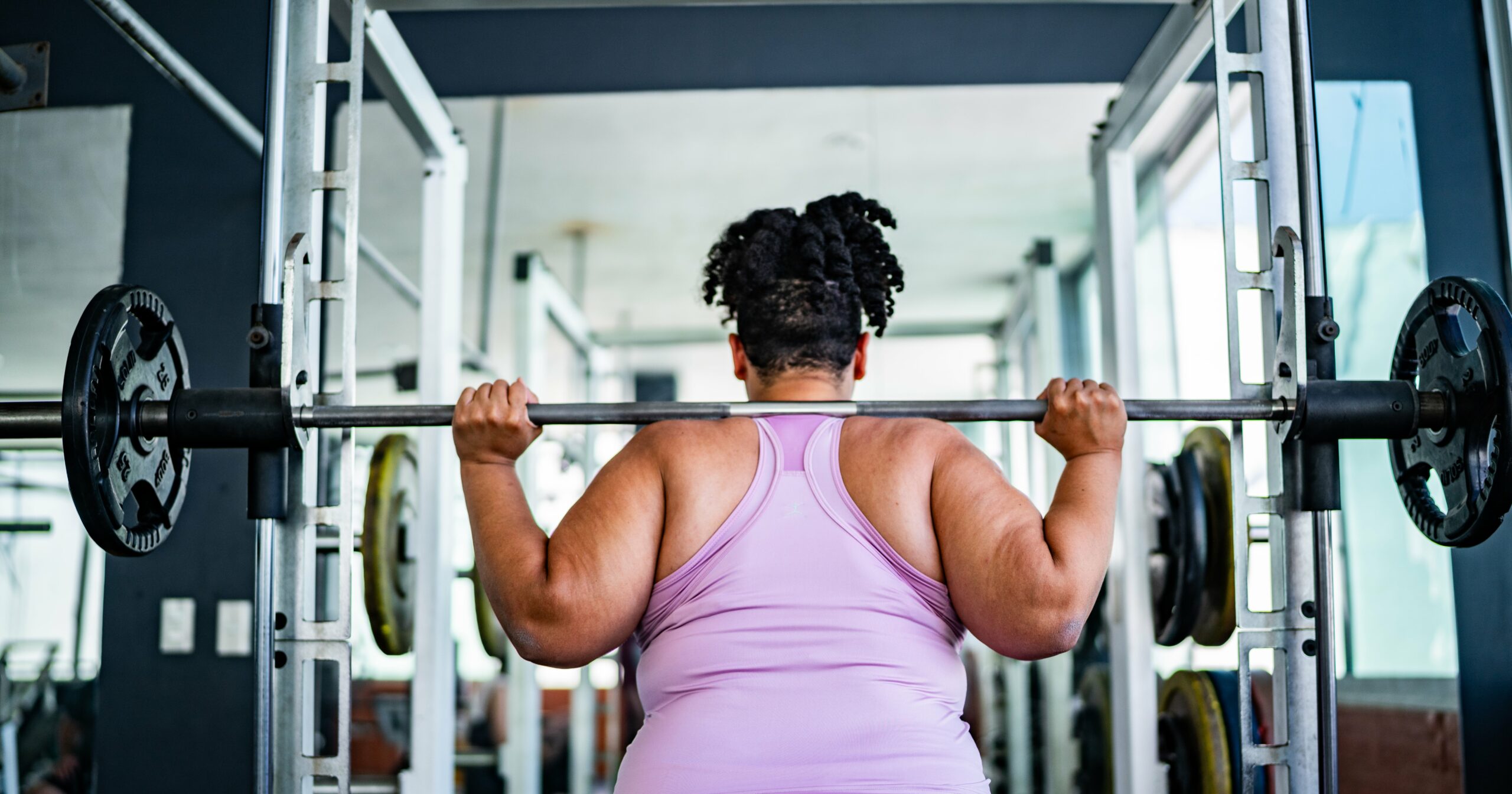Sweat is amazing. It may seem embarrassing or frustrating – especially in social situations like a job interview or first date – but sweat is one of the most important ways your body takes care of you.
During physical activity, hot weather, or even stress, your body must maintain homeostasis – or balance – and prevent you from getting too hot or too cold. Think about how you shiver when it’s cold outside as your muscles contract and relax to keep in the heat. Sweating does the opposite to allow you to cool down. Both are natural attempts by your body to maintain homeostasis.
Still, some people tend to sweat more than others and it can be frustrating if you fall into that camp. If you’ve found yourself Googling “why do my armpits sweat so much?” or “why do some people sweat more than others?” – we’ve got you covered. In order to answer those questions, it’s first important to know the basics of what sweat actually is, how it happens, and what to do if you think your sweating may be problematic.
Some people who sweat more than others may even be dealing with a condition called hyperhidrosis (more on that below!), which involves overactive sweat glands that cause excessive sweating. Think this could be you? Ahead, here’s everything you need to know about excessive sweating, excessive sweating causes, excessive sweating treatment, and more.
Experts Featured in This Article:
Shoshana Ungerleuider, MD, is an internal medicine physician, producer and host of TED Health, and founder of the End Well Foundation.
What Is Sweat?
A drop of sweat is about “99 percent water and 1 percent salts,” says internal medicine physician Shoshana Ungerleider, MD. Sweat is also naturally odorless – the smell comes from bacteria on your skin and clothes interacting with the sweat to produce an odor.
There are two main types of sweat glads that produce different types of sweat, per the Cleveland Clinic:
- Eccrine gland sweat. This is the common type of light, watery sweat you can expect during exercise, a hot day, or general exertion.
- Apocrine gland sweat. Usually coming from the armpits, head, or groin area, apocrine sweat feels thicker on the skin and actually contains some fat. When this fluid interacts with bacteria on the skin, that’s what can cause body odor.
Why Do Some People Sweat More Than Others?
“There are a variety of reasons why some sweat more than others including: exercise, warmer and more humid weather, consuming alcohol, eating spicy foods, medications, anxiety, hormones (decreases in estrogen from menopause), caffeine intake and others,” says Dr. Ungerleider.
However, some people do sweat excessively and may have a condition called hyperhidrosis, where the body’s sweat glands are overactive. Hyperhidrosis leads people to perspire more than others, and Dr. Ungerleider says the condition can be challenging and does impact quality of life.
There are two main types of hyperhidrosis, and it can be linked to a number of factors: genetics, medical conditions, medication, spinal-cord injury, metabolic diseases like hyperthyroidism and diabetes, or anxiety and stress, according to the Cleveland Clinic. The two types of hyperhidrosis are as follows:
- Focal hyperhidrosis. Also known as primary hyperhidrosis, this is an inheritable skin condition usually affecting only the armpits, hands, feet, and head. Most people with excessive sweating will have this type of hyperhidrosis, and it tends to show up before age 25.
- Generalized hyperhidrosis. Also called secondary hyperhidrosis, this kind of excessive sweating is caused by other medical problems, like diabetes or Parkinson’s disease. Some medications, like naproxen, may also increase your sweating. Generalized hyperhidrosis is most common in adults.
There is no cure for hyperhidrosis, but symptoms can be managed with your doctor. Cleveland Clinic recommends options including lifestyle changes (like switching to more breathable clothing); aluminum-based antiperspirants; oral medications like glycopyrrolate, oxybutynin, antidepressants, or beta blockers; or prescription-strength wipes to reduce sweating. But be sure to consult your doctor before starting any new course of medication or treatment. They can better help you come up with sweat solutions that are specific to you.
Why Do Some People Struggle to Sweat?
On the other side of the spectrum exists a condition called anhidrosis, the absence of sweating, which can put you at risk for overheating or even life-threatening complications, per the Cleveland Clinic.
There are many causes of anhidrosis, including but not limited to:
- Sweat glands not working properly
- Skin damage (burns, radiation therapy)
- Damaged sweat glands (including scarring or surgery)
- Nerve damage or other nerve conditions
- Dehydration
- Certain medications like tricyclic antidepressants, antihistamines, opioids, and others
Those with anhidrosis may have little to no sweating, dizziness, muscle cramps, weakness, flushing, or feeling hot without being able to cool off, the Cleveland Clinic reports. Important to note is that anhidrosis, sometimes referred to as hypohidrosis, doesn’t necessarily mean you can’t sweat at all – it may be limited to a certain area of the body.
“Another pattern of anhidrosis is lack of sweat or very little sweat in certain body areas, but heavy sweating in other body areas. This happens because your body is trying to make up for the lack of sweat in one or more other body areas,” according to the Cleveland Clinic. This tends to be less dangerous because the body still has a way to cool down.
There is no cure for anhidrosis, but you should work with your doctor, stay hydrated, and try to keep cool.
“If you think you sweat too much or if sweating is impacting your quality of life, speak to your doctor about it,” recommends Dr. Ungerleider. “There are specialists like dermatologists who can evaluate you and decide if treatment is right for you.”
Sara Youngblood Gregory was a contributing staff writer for POPSUGAR Wellness. She covers sex, kink, disability, pleasure, and wellness. Sara serves on the board of the lesbian literary and arts journal, Sinister Wisdom. Her work has been featured in Vice, HuffPost, Bustle, DAME, The Rumpus, Jezebel, and many others. Sara’s debut nonfiction work, “The Polyamory Workbook,” about navigating ethical nonmonogamy, is out now.



